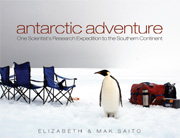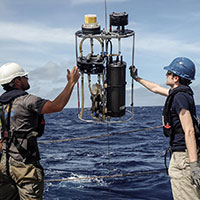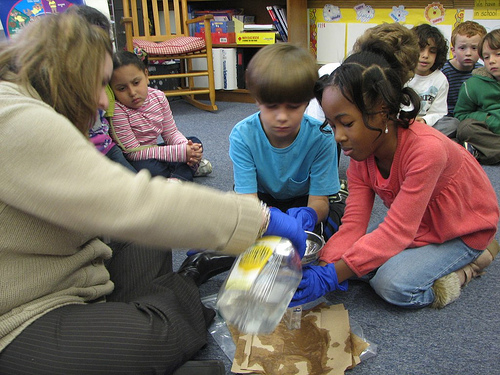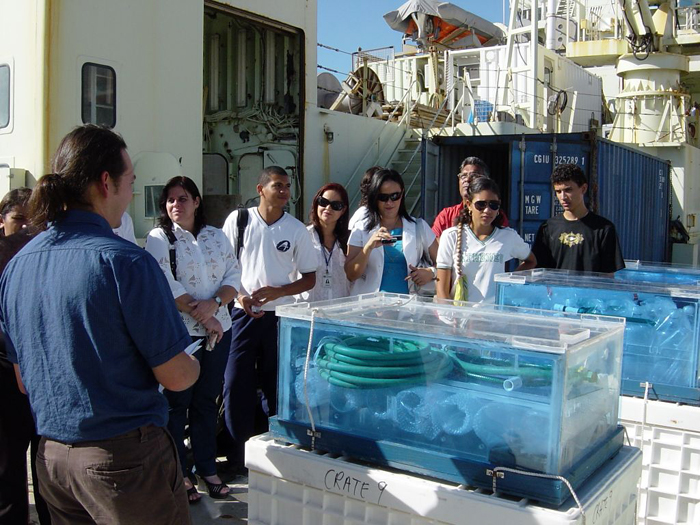Outreach
In the News
Vitamin B12 adaptability in Antarctic algae has implications for climate change
WHOI News Release
February 5, 2024
Ocean Robot Turns 50 In The Pacific
Falmouth Enterprise
Jun 9, 2023
Inner Workings: Research sub buoys prospects for 3D map of marine microbial communities
PNAS
October 27, 2020
A toxic chemical in marine ecosystems turns out to play a beneficial role
EurekAlert AAAS
July 22, 2019
Science Project Goes International
Martha's Vineyard Times
May 8, 2019
WHOI Scientists Unveil New Robot to Speed Ocean Sampling
CapeCod.com
August 12, 2017
New Robot Speeds Sampling of Ocean’s Biogeochemistry and Health
WHOI News Release
July 26, 2017
Another threat to the ocean: deoxygenation
UPI
July 6, 2017
New Book Takes Elementary School Readers To The Top Of The World
Cape News
Decemb 23, 2016
Climate Change Will Force Ocean Bacteria Into Irreversible Overdrive
Earth.com
August 31, 2016
Climate change will irreversibly force key ocean bacteria into overdrive
University of Southern California News
September 1, 2015
Vein of Iron in South Atlantic
New York Times
August 26, 2013
Huge iron-rich plume discovered beneath Atlantic Ocean
NBS News Science
August 20, 2013
Newly discovered ocean plume could be major source of iron
WHOI News Release
August 18, 2013
Mid-Atlantic ridge with iron-rich waters extending from Brazil to Namibia discovered
mercopress
November 11, 2013
Huge iron-rich plume discovered beneath Atlantic Ocean
NBC News
August 20, 2013
Scientists reveal quirky feature of Lyme disease bacteria
Phys.org
March 21, 2013
'Hot-bunking' bacterium recycles iron to boost ocean metabolism
Phys.org
January 10, 2011
Online Expeditions
Research Highlights

Proteomics Reveals Ocean's Inner Workings
September 4, 2014
In a new study, WHOI scientists have demonstrated how the emerging biomedical technique of measuring proteins—a field called proteomics—can be applied to the ocean to reveal the inner biochemical workings of microbial life and ocean ecosystems.
Source: Oceanus Magazine

Psychotherapy for Plankton
September 9, 2011
Graduate student Erin Bertrand defended her Ph.D. dissertation this week before an advisory committee of scientists. In an article for non-scientists, she explains her research on how essential phytoplankton in the ocean struggle to get enough essential nutrients.
Source: Oceanus Magazine

Recycling Rare, Essential Nutrients in the Sea
January 10, 2011
Just like us, marine bacteria at the base of the ocean food web need iron to live and grow. One key species of bacteria seems to have evolved a way to use iron for photosynthesis by day and then reuse the same iron for different metabolic activities at night.
Source: Oceanus Magazine

Exploring an Icy, Invisible Realm in Antarctica
October 28, 2009
They may be microscopic in size, but plankton play a starring role in the oceans' food web and the Earth's climate. Scientists are just beginning to reveal the rich diversity of life in remote polar seas.
Source: Oceanus Magazine

Growing Marine Plants Need Their Vitamins
June 7, 2007
B12—an essential vitamin for land-dwelling animals, including humans—also turns out to be an essential for marine algae. But its supply is limited in the ocean.
Source: Oceanus Magazine
Galleries
Other interesting stuff

Antarctic Adventure
by Elizabeth and Mak Saito
Antarctic Adventure is the story of author/scientist Mak Saito's research expedition to the Southern Continent. The book is targeted at children age 3 - 7. Simple text and stunning photographs highlight the adventure elements of fieldwork in the Antarctic (helicopters, snow storms, wildlife). Children learn where Antarctica is, what algae are, what glaciers look like, and the names of several different whales and penguins. More generally, they get a sense of what it means to do scientific fieldwork. A "Dear Reader" section at the end of the book goes into more detail about the expedition's research goals, which involve the importance of algae in global biogeochemical cycles.
The book has been donated to a number of libraries and school classrooms in Massachusetts, Ohio, Florida, and Connecticut. All proceeds from the first printing of the book are being donated to children's programs in Woods Hole, Massachusetts.
Children’s Books

To The Top Of The World
by Elizabeth Saito
To The Top Of The World is a children’s book about a science expedition to the North Pole. Stunning photographs and engaging text tell the story of this science cruise’s mission to map the chemistry of the Arctic Ocean. The story is spiced with exciting mechanical failures, stormy seas, roaming polar bears, and anecdotes from three months spent on board a Coast Guard icebreaker ship longer than a football field.




